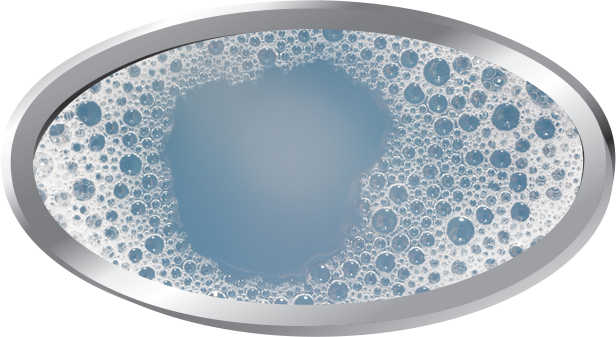The Role of Defoamers in Enhancing Product Quality and Performance
Defoamers offer as vital ingredients that alleviate this issue, making certain smoother production process while enhancing the visual and functional attributes of the final items. The choice of the appropriate defoamer can be essential to accomplishing optimum outcomes, increasing vital questions concerning formulation compatibility and performance metrics that warrant further exploration.
Recognizing Defoamers
Understanding the function of defoamers is essential for preserving item high quality across various industries. Defoamers are chemical additives designed to avoid the development and decrease of foam in fluid systems, which can adversely impact processes such as mixing, filling up, and surface area tension. Lathering can bring about ineffectiveness, item problems, and endangered aesthetic appeal, making defoamers a critical part in manufacturing operations.
In industrial applications, defoamers help to boost item consistency and stability. The efficient use of defoamers not just makes sure smoother manufacturing procedures however also adds to exceptional product efficiency.
Additionally, the selection and solution of a defoamer have to line up with particular application requirements, such as compatibility with various other ingredients, performance under differing temperature level and pH conditions, and potential regulative restrictions. Ultimately, recognizing defoamers' functions and their relevance in different formulations is essential for maximizing production and ensuring the finest final product.
Kinds Of Defoamers
Defoamers can be classified into numerous types based upon their composition and mechanism of activity. The key kinds include silicone-based, non-silicone natural, and inorganic defoamers.
Silicone-based defoamers are among one of the most efficient, primarily because of their capacity to spread promptly on the liquid surface and interrupt foam development. Their special chemical structure enables premium stability, making them appropriate for high-temperature applications and environments with differing pH levels.
Non-silicone organic defoamers, often composed of all-natural oils or fats, are valued for their biodegradability and lower toxicity. These are normally used in food and beverage applications where security and environmental influence are critical.
Inorganic defoamers, which include compounds like talc or calcium carbonate, act by increasing the thickness of the fluid, therefore reducing foam stability. They are frequently made use of in commercial procedures where compatibility with various other products is not a problem.
Each kind of defoamer has distinctive benefits and constraints, allowing for customized remedies relying on the certain foaming concerns run into in numerous applications. Comprehending these differences is vital for maximizing performance and achieving wanted product top quality.
Applications Throughout Industries
Many sectors utilize defoamers to enhance product high quality and operational performance. In the food and drink industry, defoamers are critical in procedures such as brewing and dairy manufacturing to stop foam formation, which can lead to inadequacies and product incongruity. By regulating foam, suppliers can make certain much better return and a much more uniform product.
In the pharmaceutical market, defoamers play an important duty in the solution of fluid drugs, where excessive foam can restrain mixing and accurate application. Their use aids preserve the honesty of the formulas and helps with smoother manufacturing processes.
The paint and coatings market also depends on defoamers to improve the efficiency of items during application. By minimizing foam, these additives make certain a smoother finish and boost the aesthetic high qualities of the final product.

Advantages of Utilizing Defoamers
While the application of defoamers differs throughout industries, their advantages regularly boost product quality and procedure efficiency. One substantial advantage is the decrease of foam formation throughout manufacturing procedures, which can or else cause production hold-ups and variances in item quality. By reducing foam, defoamers make it possible for a smoother flow of products, helping with extra effective procedures and decreasing the probability of tools breakdowns.
In addition, the usage of defoamers can improve the look and appearance of end products. In sectors such as coatings, paints, and food processing, too much foam can compromise the aesthetic aesthetic appeals and general top quality, while the appropriate defoamer application makes sure an uniform finish and desirable attributes. Defoamers can contribute to set you back savings by reducing waste during production and maximizing the usage of raw materials.
Picking the Right Defoamer
Selecting the best defoamer is critical for optimizing production processes and making sure item top quality. The selection of defoamer influences not only the effectiveness of foam control but likewise the overall performance attributes of the end product. Variables to take into consideration include the type of application, the chemistry of the formulation, and the environmental problems under which the item will certainly be utilized.
Various markets may require particular defoamer types, such as silicone-based, organic, or polymeric defoamers. Understanding the compatibility of have a peek here the defoamer with the key ingredients is vital to stay clear of adverse responses that might jeopardize product integrity. In addition, the defoamer's efficiency in various temperatures and pH degrees need to be examined to make sure constant check this site out performance.
Checking the defoamer in small applications can offer beneficial understandings into its efficiency and suitability. Factor to consider of governing compliance, especially in food, drugs, and cosmetics, is paramount in choosing a defoamer. Inevitably, a complete evaluation of these variables will cause the option of a defoamer that not only controls foam successfully however also boosts the top quality and efficiency of the last item.
Final Thought

In final thought, defoamers are vital additives that substantially boost item top quality and performance across numerous sectors. The critical choice and application of defoamers lead to cost financial savings, optimized source usage, and raised consumer fulfillment.
Frothing can lead to ineffectiveness, product issues, and compromised visual charm, making defoamers a crucial part in manufacturing operations.

Comments on “Defoamers and Their Impact on Reducing Foam in Liquid Systems”